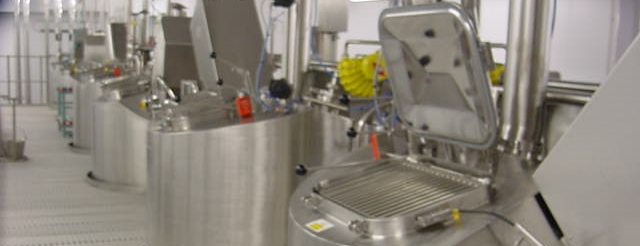Three ways robot chefs will reduce capital costs in chilled food manufacturing
Traditionally fully automated manufacturing cells require significant capital investment because of the complexity of the processing equipment required. Dedicated robotic chefs, like APRIL, will significantly reduce both the initial capital investment and ongoing running costs shortening return on investment.
The APRIL robotic chef uses state of the art cooking and material handling technologies to process ingredients with real care. Robots have a proven track record for cost cutting in other industries and APRIL chefs will reduce the capital costs of chilled food manufacturing in three key ways:
Utilisation of high-value assets
Factory footprint reduction
Use of simplified equipment
1) Utilisation of high-value assets
By increasing fixed asset utilisation food manufacturers can increase revenue and return on capital. By way of example, typically cooking vessels must all have the same high-value processing devices on each kettle. If I have 10 kettles each with a homogeniser, sadly the nature of batch processing means the homogeniser will typically have a utilisation of 5%. APRIL systems process in parallel allowing utilisation to exceed 70%, for the same application only one homogeniser is required. Not only does this save money initially but also on ongoing maintenance costs.
Traditional Processing Vessel Arrangement
2) Factory footprint
The smaller the factory footprint the smaller the costs of building and running the factory. Within food manufacturing, chilled high and low care areas have a high cost per square meter. APRIL manufacturing cells will typically be less than 40% of a traditional system footprint. This means a considerably less expensive chilled food manufacturing facility to build and run over time.
3) Simplified equipment
In many food manufacturing processes significant investment is required in order to automate processes due to complex equipment and product routing. This not only is costly but creates significant cleaning and maintenance challenges. Robot chefs can simplify these processes minimising the complexity and equipment used, in doing so reducing investment and ongoing maintenance, cleaning costs and adapting to future product lines. The reliability and maintenance of the Robotic chef is staggering with projected downtime of less than 15 minutes in a year and little more than 1 hour’s maintenance. The APRIL robotic chef uses dedicated vessels requiring no pipework or valve matrices or pumps making it very easy to clean and avoid cross contamination issues.
Robotics chefs are coming on stream now, make sure you enjoy the benefits. If you would like to learn more about APRIL sign up for our launch event on Thursday 28th April 2015 at the National Centre for Food Manufacturing, Holbeach UK or if you would like to talk to someone please call one of the APRIL specialists at OAL.
For the latest updates, click to follow us on:

